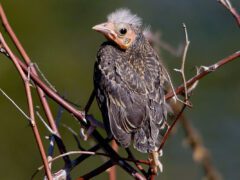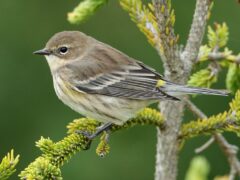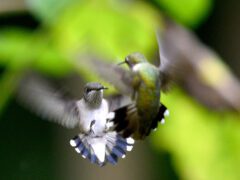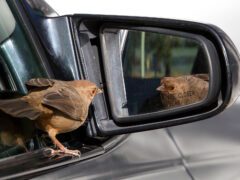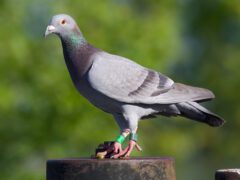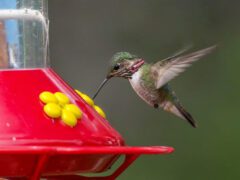Bullock's Oriole Photo Gallery
Adult male
Slim but sturdy songbirds with a medium-long tail and a sharply pointed bill. Adult males are bright orange with a black back and large white wing patch. Note black line through the eye and black throat.
© Nancy Christensen / Macaulay LibraryCalifornia, June 03, 2019Adult male
A nimble oriole that often perches and forages at the tips of twigs. This video has no audio.
© Larry Arbanas / Macaulay LibraryArizona, May 13, 2006Not all videos have soundFemale
Slim and sturdy with a sharply pointed bill. Females have a yellowish-orange head and tail, a grayish back, a whitish belly, and white wingbars.
© Janey Woodley / Macaulay LibraryTexas, May 27, 2017Female
Sharply pointed bill is characteristic of orioles. Female Bullock's have a yellowish-orange head and throat and a whitish belly.
© Matt Davis / Macaulay LibraryCalifornia, April 29, 2018Female
Often visits sugar water feeders. This video has no audio.
© Timothy Barksdale / Macaulay LibraryArizona, May 01, 1994Not all videos have soundAdult male
Picks insects from leaves and twigs and sometimes takes nectar from flowering plants.
© Larry Arbanas / Macaulay LibraryArizona, May 01, 2006Not all videos have soundImmature male
Immature males look like females, but have a black throat and a dark eyeline.
© Suzie McCann / Macaulay LibraryTexas, June 03, 2019Immature male
Builds a gourd-shaped nest that is suspended from the ends of flexible branches.This video has no audio.
© Larry Arbanas / Macaulay LibraryArizona, May 13, 2006Not all videos have soundHabitat
Found in open woodland along streams, particularly among cottonwoods. They also occur in orchards, parks, and oak or mesquite woodlands.
© Henry Burton / Macaulay LibraryOregon, June 09, 2017Compare with Similar Species
Click on an image to compare
Species in This Family
Troupials and Allies(Order: Passeriformes, Family: Icteridae)
More to Read
Don't miss a thing! Join our email list
The Cornell Lab will send you updates about birds,
birding, and opportunities to help bird conservation.

























